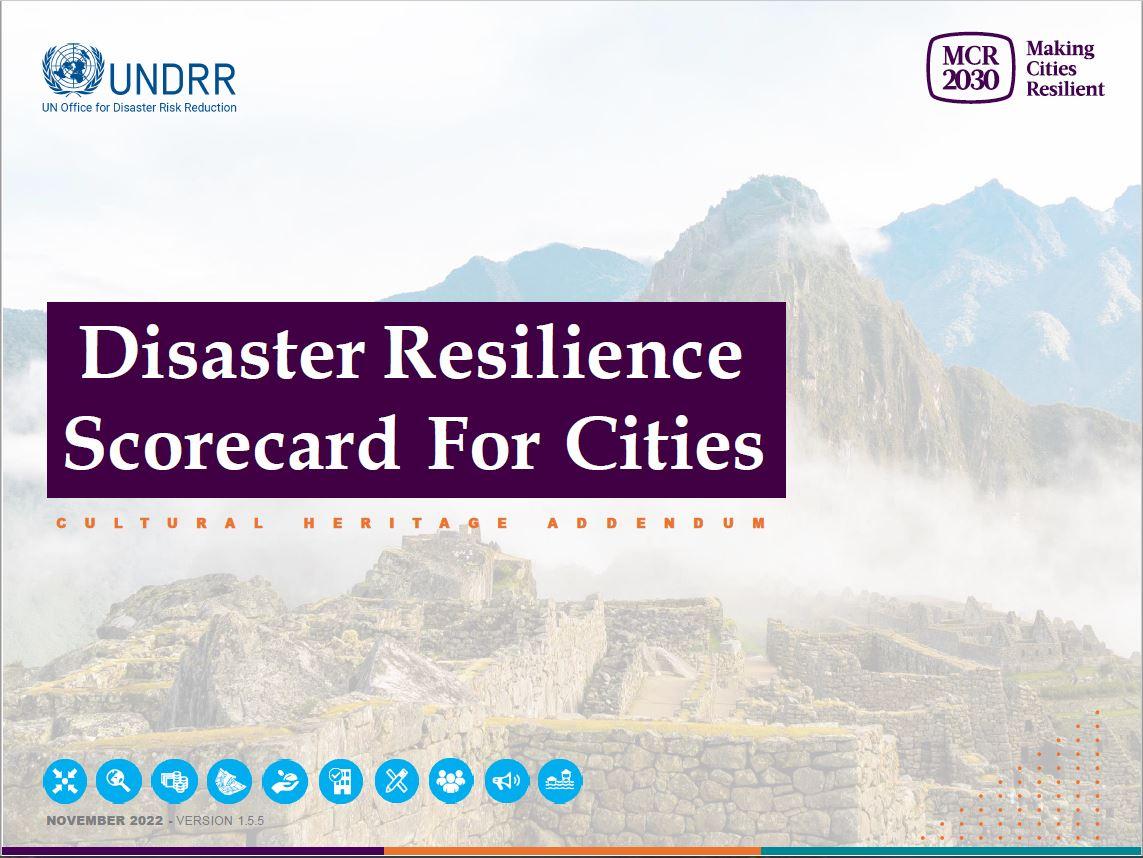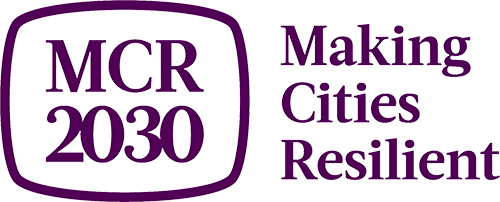Disaster Resilience Scorecard for Cities: Cultural Heritage Addendum

Disaster Resilience Scorecard for Cities: Cultural Heritage Addendum
Cultural heritage (including tangible, intangible, and cultural industries) has a significant potential for reducing disaster risk and actively pursuing sustainable development. While the Sendai Framework for Disaster Risk Reduction 2015–2030 recognizes the importance of including cultural heritage into disaster risk reduction policies, there is still a gap in integrating cultural heritage into national and local disaster risk reduction strategies and vice-versa.
We need to understand the impacts of risk on cultural heritage, identify those risks before a disaster occurs, and protect our cultural institutions and other sites of historical, cultural, and religious interest. To better protect lives, livelihoods, and cultural heritage is mandatory to strengthen people’s and assets’ resilience and make disaster risk reduction an intrinsic part of cultural heritage management. In a post-disaster situation, both tangible and intangible cultural heritage contribute to strengthening identity and social cohesion and inclusion; they operate actively in the recovery process of affected communities.
This Cultural Heritage Addendum to the Disaster Resilience Scorecard for Cities aims to support the development of culture-based and people-centered disaster risk reduction and resilience strategies integrated with cultural heritage and development policies. It is aligned to the Ten Essentials for Making Cities Resilient, which offer ample coverage of the issues that cities need to address to become more disaster resilient.
It has 44 questions scored from 0 to 3 that add to those included in the original Scorecard. Therefore they should be filled simultaneously.
When questions in this Addendum overlap with those of the original Scorecard, a cross-referencing note is included. Also, as part of the supporting materials, Terminology and References are listed at the end of this document.
Data needed to complete this Addendum:
- Cultural heritage management strategies/plans (pre-event, response, and post-event, if any).
- Knowledge of all groups/institutions involved in cultural heritage management (public, private, faith-based, grassroots, non-profits, etc.).
- Knowledge of funds currently employed/available for cultural heritage management (if any).
- Data on vulnerability and exposure of cultural heritage (both tangible and intangible, if any).
- Methodologies used to determine the vulnerability and exposure (in any).
- Data on tourism and tourists’ presence (with variations between peak/low season).
- Knowledge of change in the land use over the year (if any).
- Loss scenarios for a suite of possible hazards (if any).
- Data on insurance coverage for cultural heritage (if any).
- Knowledge of existing codes for new constructions and strengthening of existing ones (if any).
- Data on ecosystem services, their conservation and possible role in DRR (if any).
- Knowledge of population awareness on cultural heritage and strategies currently in use (if any).
Expected impact
The benefits of using the Addendum, along with the Scorecard, comprise (but are not limited to):
- Establish an inventory and a baseline of the current level of disaster resilience concerning cultural heritage.
- Increase awareness and understanding of resilience challenges for cultural heritage.
- Identify funding opportunities for cultural heritage preservation, create or strengthen knowledge exchange activities among cities, and engage the private sector.
- Raise awareness within professionals, decision-makers, and civil society, emphasizing professional education and Continuing Professional Development (CPD).
- Enable dialogue and consensus between all stakeholders responsible for cultural heritage protection, disaster risk reduction, and related areas.
- Engage communities (particularly minorities and vulnerable population groups) in the decision-making process related to cultural heritage protection and disaster resilience.
- Raise awareness among decision-makers and the population about the potential socio-economic impacts of tourism (e.g., gentrification, increased inequalities, and reduced business resilience) and the possible ways to manage those impacts.
- Integrate culture and local knowledge into actions related to cultural heritage protection and disaster resilience.
- Enable discussion about priorities for investment and actions based on a shared understanding of the current situation.
- Promote the integration of traditional materials and construction techniques in buildings codes, and identify strategies for strengthening and preserving heritage assets.
- Lead to actions and implementable projects to deliver increased resilience for the city, the community, and its cultural heritage over time.
This Addendum results from a working team that integrates academia, UN entities, resilience partners, and the private sector. Ten heritage cities in Peru piloted the Consultative Version 0.5 as part of a joint project among the UNESCO Office in Peru, the UNDRR Regional Office for the Americas and the Caribbean, and AECOM International Development in 2019-2020. Piura, Trujillo, Lambayeque, Chachapoyas, Lima, Rimac, Arequipa, Ayacucho, and Cusco applied the original scorecard and extended the resilience assessment to include cultural heritage into disaster risk reduction efforts. Findings from these pilots supported further development of this tool and will be published as a guideline document.

